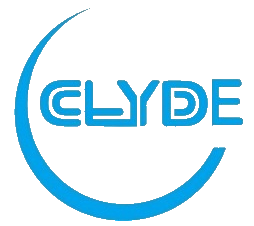How to deal with leakage of spiral plate heat exchanger
Spiral plate heat exchanger is composed of two closed and independent spiral channels. If there is leakage in the channels, it is difficult to determine the leakage point. In order to accurately identify the leakage point, drilling method was adopted. When drilling, the drilling position should be set on the same spiral channel at one end of the heat exchanger, and arranged in a cross shape. During drilling, efforts should be made to prevent iron filings from falling into the heat exchanger to ensure smooth passage.
1. Fill water and pressure to check for leaks
On a channel that has never been drilled, a pressure water pump is used to fill the heat exchanger with water and create a certain pressure. At this point, water will leak out from the location of the heat exchanger leakage, flowing into another channel (the drilled channel) and dripping down from the layer closest to the leakage point (at this point, the drilled end of the heat exchanger should be placed downwards). By determining the position of the dripping water, it is possible to determine which layer has internal leakage. Then, a section of the head on the same layer of the heat exchanger that has not been drilled will be cut as an observation hole, and the specific leakage point can be accurately determined from the observation hole.
2. Repair of internal leaks
1) Drilling: After determining the location of the internal leakage point, start cutting holes from the outermost layer of the heat exchanger corresponding to the leakage point, in the order of from outside to inside, until the layer with the internal leakage point is reached. The cut holes should be elliptical in shape, with a size that is larger on the outer layer and gradually smaller on the inner layer. Generally, the size of the holes on each layer should differ by 40mm. If the leakage point is deeper, the holes cut on the outer layer should be larger.
2) Cleaning slag: After cutting the holes, the oxide slag left on each layer should be carefully cleaned. This is the key to whether the repair plate can be tightly welded to each layer of spiral plate when welding the repair plate. A chisel and a small grinding wheel used for trimming the mold can be used to clean the oxide slag, and attention should be paid to removing the cleaned slag as much as possible to prevent it from falling into the heat exchanger.
3) To ensure the quality of the repair, the sheet metal cut from each layer of the heat exchanger is no longer used. A new sheet metal is required, which is made of the same material and thickness as the spiral plate of the heat exchanger. The periphery of the sheet metal should be larger than the holes cut from each layer of the heat exchanger, and it should also be elliptical, and made into an arc shape consistent with the curvature of each layer of the spiral plate of the heat exchanger.
1) When welding internal leakage points, carefully check whether the leakage points are cracks or sand holes. If necessary, use a hand grinding wheel to clean the leakage points and grind grooves to ensure welding quality.
2) J422 welding rod is used for welding repair, with a diameter of 3.2mm and a current controlled between 100-120A. The leakage point is welded first, and then each layer of repair plate is welded layer by layer from the inside out.
3) The elliptical replenishment plate is welded tightly against the inner arc surface of the heat exchanger, with the purpose of facilitating operation and ensuring welding quality.
4) To ensure the smooth installation of the elliptical repair plate into the heat exchanger, a section of round steel can be welded onto the repair plate. After spot welding the elliptical repair plate, it can be removed.
5) Short round steel braces are also welded between each layer of repair plates (mainly to increase the stiffness between elliptical repair plates). The number of short round steel supports welded on each layer of the repair plate is determined by the size of the repair plate.
6) In welding, it should be ensured that after welding each layer of elliptical repair plate, the welding position should be carefully checked. If there are sand holes, they should be repaired to ensure the welding quality of each layer.
Test pressure and seal the borehole
After welding the inner leakage point and the repair plate, use a pressure water pump to inject water into the channel of the last drilled hole, and maintain it for a certain period of time without any pressure leakage phenomenon. Sealing drilled holes: used for drilling short round steel sections with the same diameter, sealing and welding the position and observation hole of the drilled hole, and then conducting a hydraulic pressure test on the channel to ensure no leakage. Precautions during the pressure test process: 1) Before cutting the holes in the heat exchanger, steam should be used to blow away the chemical substances remaining in the heat exchanger to prevent combustion and safety accidents during gas cutting. 2) Before repairing the heat exchanger, it is necessary to confirm whether it has severe corrosion and determine whether it still needs repair.
